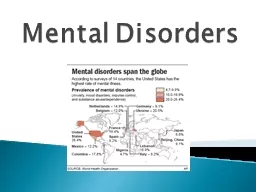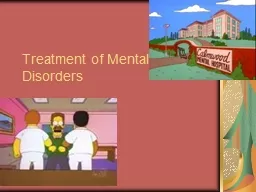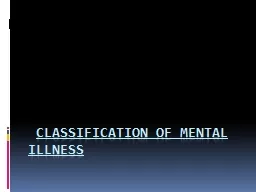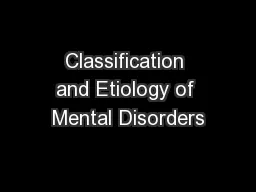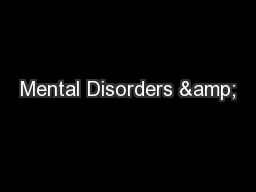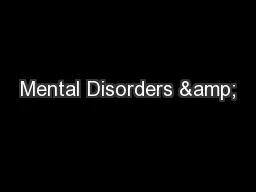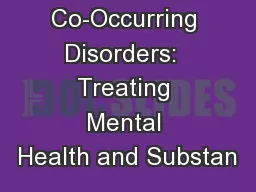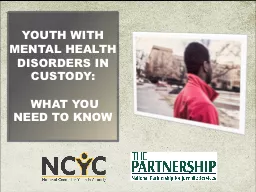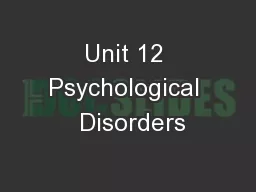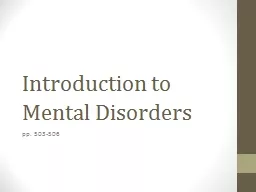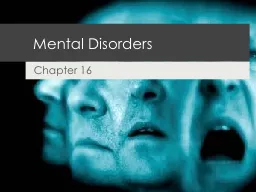PPT-Mental Disorders
Author : stefany-barnette | Published Date : 2016-10-20
Mental illness is a medical condition those who have mental disorders struggle to cope with everyday life because of their altered moods thinking or behavior
Presentation Embed Code
Download Presentation
Download Presentation The PPT/PDF document "Mental Disorders" is the property of its rightful owner. Permission is granted to download and print the materials on this website for personal, non-commercial use only, and to display it on your personal computer provided you do not modify the materials and that you retain all copyright notices contained in the materials. By downloading content from our website, you accept the terms of this agreement.
Mental Disorders: Transcript
Download Rules Of Document
"Mental Disorders"The content belongs to its owner. You may download and print it for personal use, without modification, and keep all copyright notices. By downloading, you agree to these terms.
Related Documents

